Welcome to the latest edition of Project Design. Mary Ann, Annie, and I are joined by one of our favorite new bloggers Kerry from Graham Hill Design, and Marie’s Home and Garden, and our old pal Karen from Garden Home and Party
I was hoping to spiff up my outdoor living areas but ran out of time. so I would love to talk to you about the importance of structure in the garden and how I have utilized it in my own garden. The backbone of the garden are trees, hedges, evergreen shrubs, walls, fences, arbors, gates, and other man-made elements. All of these items work together to create a permanent and vertical dimension. In addition, the secondary structural elements such as paths and paving have a major impact on how we use our garden and create design elements that highlight it year round. Always pay attention to the architecture, color, and texture of your home to ensure that these structures are visually compatible with the overall effect you would like to create in your garden. Too much variety in styles, colors, or shapes can destroy the sense of unity required to ensure a harmonious result. Let’s take a look at the Importance of Structure in the Garden in my garden in particular.
I knew nothing about garden design when we built our home over 25 years ago. I hired a professional (Helen Daniels Design) who designed the bones of the garden much of which remains today. Her vision for the front garden was that of a Spanish Mission garden. Many of the original plants have been garden favorites; the lavender, Mexican bush sage, and the rockroses. The rest have been replaced with plants that thrive rather than struggle. Not long after we moved in I began researching different garden styles. The French Style Garden suited both my aesthetic and my water needs.
Over time I added more gravel pathways linking the different areas of the garden and added structure with urns, trellises, statues etc.
The front garden is filled with water conscious and easy care plants. The focal point of the front yard is the Mission Style Fountain area. Four gravel paths lead off the saltillo walkway to the fountain. It consists of four half-round beds, each filled with easy care Oleander standards, apple blossom landscape roses (they grow them on freeways) and Teucrium. The Oleander standards provide much-needed height to balance the size of the house.
There are two large scaled planted areas off the fountain. The left area is surrounded by a low stucco fence for structure and interest, olives for height, which are underplanted with drifts of rockroses, lavender, and Mexican bush sage. Nearest the path is a border of nepeta fassenii (my fav) which borders the entire front yard.
At the corners of the path are two seasons statues to punctuate the corner.
The middle area is planted similarly but banks of plumbago add height and that unusual periwinkle blue.
Recently planted olives provide height in the back, while the ugly white fence is partially covered with jasmine (not so successfully). I have considered replanting with bougainvillea. This area is punctuated by two redwood spires ( constructed as a birthday gift from our late friend) to add some height to the sea of middle size plantings.
The original moss covered saltillo walkways remain and serve as the main thoroughfare.
The two garden spaces flanking the front door were completely redesigned by me several years ago. This area needed to strike a balance between the loos plantings in the yard and the formality of the front entrance. Both areas are hedged with boxwood (very easy care in my area). The area on the left is planted simply with wine colored daylilies. Behind it resides an old hay wagon planted with flowers that echo the color of the garden and house.
The area on the right is divided into five areas. It is still a work in progress (aren’t all gardens?) At the center is a bird bath surrounded by coral bells (I need to add something to the center maybe gaura or penstemon).
The two back triangles are filled with hydrangea (I think I will replace with better colors this fall), the front two we just recently planted with more apple blossom landscape roses. My plan was to add new pillows and a small planter on the table (another work in progress).
On the far right behind the fountain is a center trellis covered with morning glory with a butterfly bush. On either sides are flax.
I added the wide gravel pathway (always make them wider than you think you need them) to access the side yard several years ago. I tucked in the concrete garden bench to add interest and a place to rest.
In planning your own garden don’t forget to consider the importance of structure in the garden. A garden that has good lines and structure will look good even if nothing is blooming. Structural items provide interest, create privacy and can provide shade. Most of the structural elements in my garden were added over time except the gates, paths, and fences. Gardens evolve. Don’t be afraid to take your time. If you would like more information on how to add structure to your garden you might want to check out the links below, or my post the importance of structure in the garden part two
Finding freedom in structure-Fine Gardening
Horticulture Magazine-Adding Structure to the garden
I have linked some of my favorite garden books and some I have on my list below. Now stop by and check out the other blogs below for more ideas on how to amp up your own outdoor living spaces.
GARDEN BOOKS I LOVE OR AM COVETING




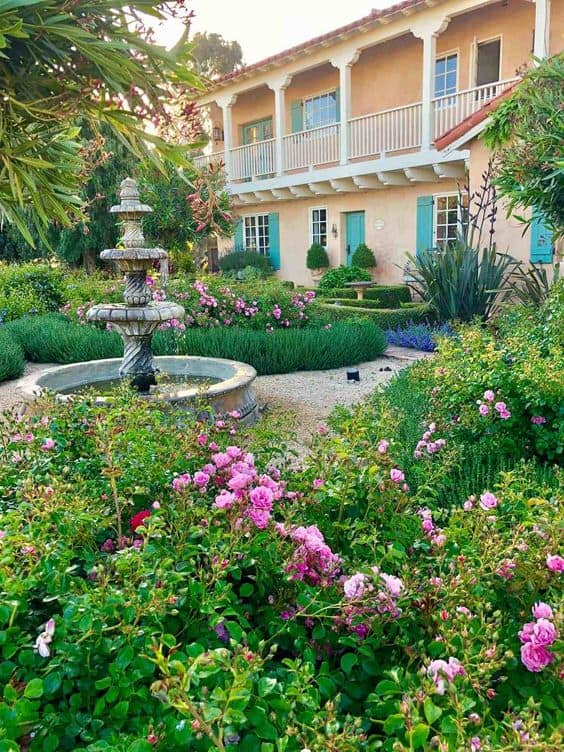















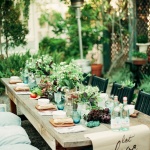
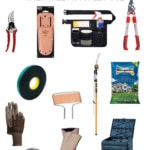
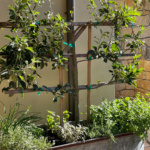
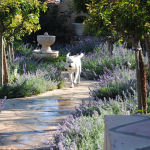
Hi Patricia
I have tried a few things (well many things) that have failed as well. A garden is a learning experience…learning what thrives, what one can personally handle (workload wise), and a lot of trial and error. It is always a work in progress! Have a great week!
Cindy
Your garden is amazing and a testament to planning with hardscape. Everywhere I look I see thoughtful choices, evolution with time and a back breaking amount of work! Simply my sweet patootie! My first garden was heirloom roses and lots of companion plants and little hedges. At 60, I ripped that out and planted evergreens and tomatoes!!!!!! At 70 I am thinking what was I thinking?
Hi Patricia
I have tried a few things (well many things) that have failed as well. A garden is a learning experience…learning what thrives, what one can personally handle (workload wise), and a lot of trial and error. It is always a work in progress! Have a great week!
Cindy
Cindy,
Gorgeous as usual! Do you have a gardener or do you do all of that yourself?
A BEAUTIFUL GARDEN!
GARDENS JUST GET BETTER WITH TIME…………..
YOURS SEEMS TO BE PREFECT!
OFF TO READ THE OTHER BLOGGERS YOU MENTIONED!
XX
Thank you for sharing your exquisite garden. You inspire me to to tend and improve my neglected yard. I appreciate your specific descriptions of plants so I can hopefully reproduce some of your results. Would it be too boring to ask you about how you care for your heavenly plants?
Such a beautiful garden, Cindy. All my favorite plant colors! Are the oleanders the tree-shaped tall plants? When you first mentioned them, I was worried for your dog, but if you have managed to get them in tree shapes then all is safe. @sheilamerle1
Hi Sheila Merle
The oleanders are standard varieties and we keep them clipped. I am aware they are toxic to pets. We have never had a dog that was even remotely interested in the Oleanders. I am sure there are some that you couldn’t trust. Thank you so much for your concern though, we love our dogs don’t we?
Cindy,
There is so much goodness here I don’t even know where to start! What a magically, fantastic garden you have. I could almost smell the lavender as I read your post and imagined myself in the European countryside. I’m so excited to have been included in this amazing group of bloggers. Hope we get to meet up some day!
Kerry
Cindy -Your gardens and your home are breathtaking! I love how you photograph it at the most magical times of day…the light looks like Tuscany. You must make so many beautiful flower arrangements from all of your gardens. You are so talented Cindy!
Cindy,
I don’t know if I commented yet, this morning (when I was reading your post) I got interrupted. I’ve always loved your yard and you happen to live in one of my favorite parts of the state. Your yard is spectacular.
Thank you for inviting me to participate in this fun series.
xo,
Karen
Hi Karen
So glad you are blogging again and joined us! We must connect the next time you are up in the area!!